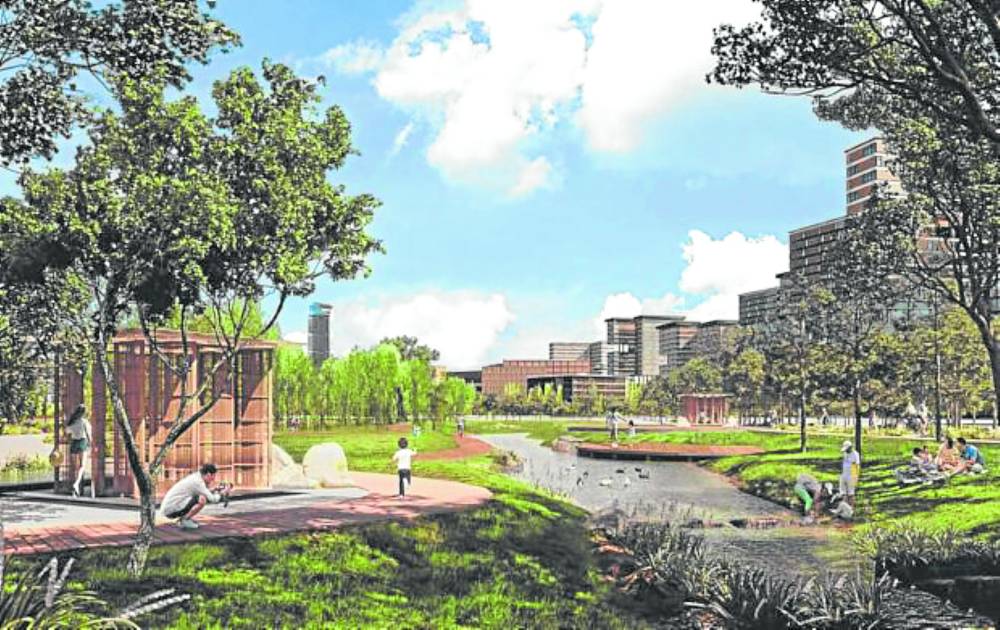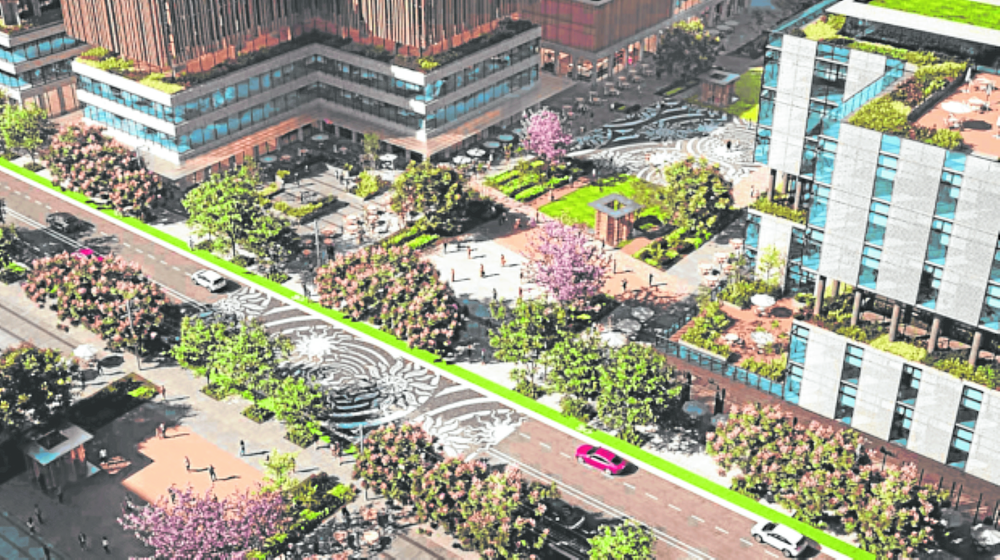
Riverpark promises a picturesque oasis. (FILE PHOTO)
Mixed-use estate or township developments are integral to contemporary urban planning with the unique and diverse living experience they offer. They blend residential, commercial, leisure, and recreational spaces into a single, dynamic community.
These unique environments are designed to cater to the eclectic needs of residents, businesses, and visitors. They foster a vibrant, beneficial, and sustainable atmosphere.
Strategic location
These estates are typically situated near business districts, educational institutions, and essential services. The suitable location makes them desirable because they offer the benefits of a well-connected urban environment.

Riverpark Commercial Strip (FILE PHOTO)
Integrated amenities
A comprehensive range of amenities catering to various lifestyle needs characterizes modern communities. These amenities include parks, recreational facilities, shopping centers, restaurants, and entertainment options, all integrated within the same area. Such developments provide residents essential services and leisure activities at their convenience, encouraging a sense of community and enhancing the quality of life.
Yume’s Pocket Park gives residents a place for leisure activities and relaxation. (FILE PHOTO)
Green spaces
The real estate market increasingly seeks green spaces, a crucial trend in combating urban congestion and the “concrete jungle” effect. These natural oases, including parks, gardens, and green corridors, provide residents much-needed respite from city life. They also serve as community gardens, wetlands, and wildlife habitats, promoting biodiversity and ecological balance.
Designing for biodiversity
Elements such as pocket parks, tiny forests, textured walls, and rain gardens create biodiversity hotspots within the community. These features attract and support various plant and animal species, enhancing the ecological value of the development.
Connection to larger green networks
Essential building elements connect with the existing green infrastructure such as trails, waterways, and conservation areas. These connections create green corridors that encourage wildlife movement and integrate the community into the broader ecological network.
Passive open spaces like those in Met Park are essential components of mixed-use developments. (FILE PHOTO)
Passive open spaces
Passive open spaces like plazas, civic spaces, and linear greenways are essential components of mixed-use developments. These spaces provide natural areas for relaxation and recreation while serving ecological functions. They improve the neighborhood’s visual appeal and enhance residents’ overall welfare.
Community engagements, social connectivity
The success of estate developments is deeply rooted in their ability to foster community engagement and social connectivity. Design elements like interactive public art, community gardens, and open spaces for events and social gatherings are not just integral to these communities, they also serve as the heart and soul of these developments. Collaborations with local artists, cultural organizations, and community groups help program activities that resonate with residents, making these outcomes community landmarks and fostering a strong sense of belonging.
Strategically located at the heart of Mandaluyong, The Observatory emphasizes convenience for its residents. (FILE PHOTO)
Resilience and adaptability
The success of mixed-use developments hinges on their capacity to endure and adjust to climate change and public health crises. Designing adaptable spaces that can accommodate environmental changes and evolving work and social patterns is crucial. Incorporating advanced technologies, such as tracking and monitoring environmental conditions, into the planning and development processes is now the standard practice.
The author (at www.ianfulgar.com) is a leading architect with an impressive portfolio of local and international clients. His team elevates hotels and resorts, condominiums, residences, and commercial and mixed-use township development projects with innovative, cutting-edge design and business solutions that have garnered industry recognition, making him the go-to expert for clients seeking to transform their real estate ventures

